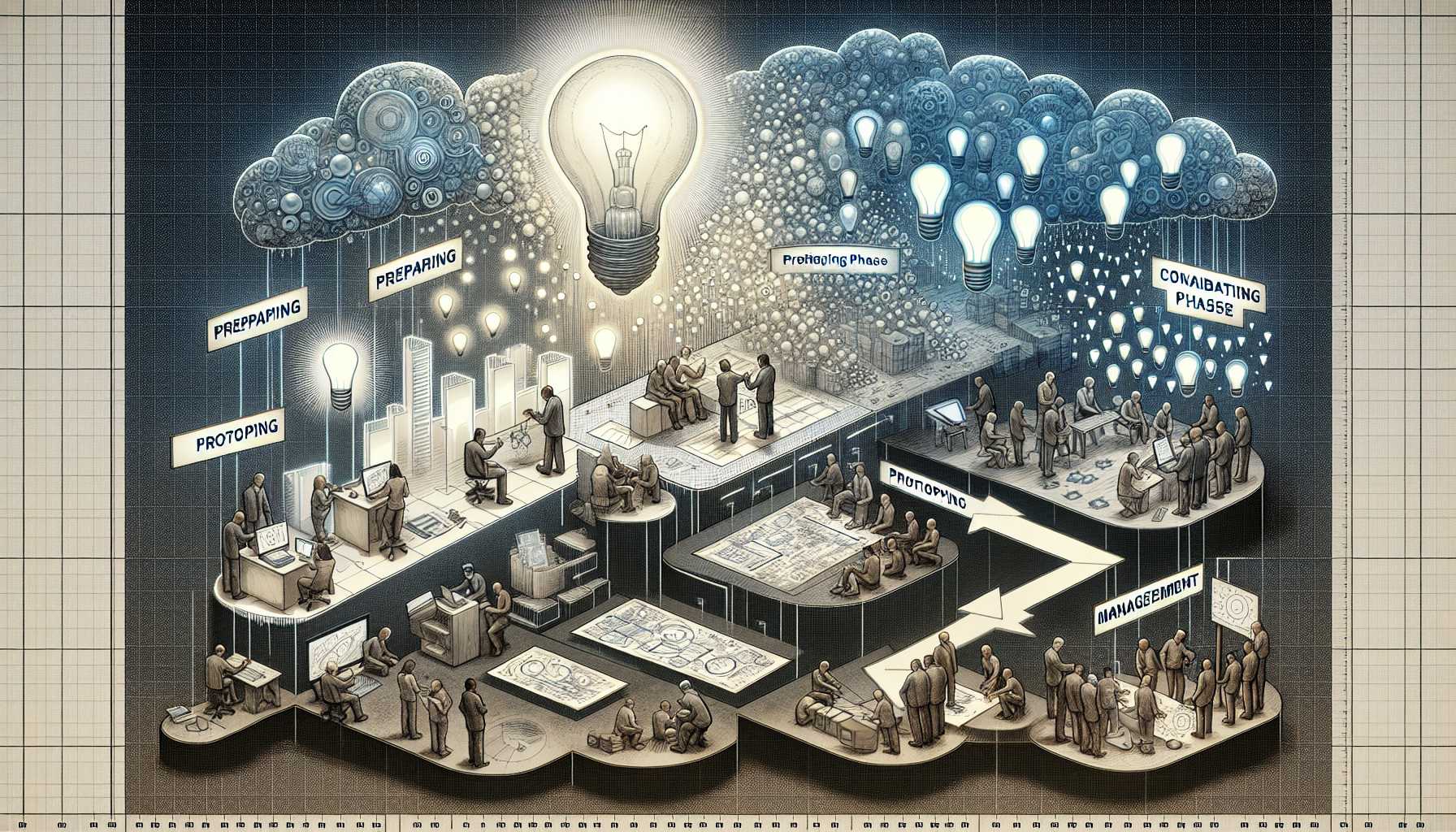Welcome fellow product leaders to another deep-dive into the world of product management.
Today’s installment focuses on a pivotal moment in any product’s lifecycle: transitioning from ideation to development. This phase is replete with excitement and potential, yet fraught with challenges. Drawing from my own storied experiences in the tech world, I aim to demystify this process and share strategies that have served me and my teams well over the years.
Setting the Stage for Success
Imagine launching a ship: before it can voyage across the oceans, it needs a well-constructed hull, a capable crew, and a map of the waters ahead. The same is true for product development; ample preparation is key. Here’s how I’ve learned to set the stage for a successful transition from ideation to development.
1. Grooming the Product Backlog
Curating a product backlog that is both visionary and actionable is an art. During my tenure at [Redacted Company], one of our flagship products began with a backlog that was too visionary, without enough consideration for implementation. I learned to balance high-level concepts with granular user stories that developers could act on, ensuring a smoother transition to development.
2. Establishing Clear Roadmaps
Clarity is paramount. By articulating a product roadmap that correlates with business goals, technological capabilities, and market needs, you create a guiding light for the entire development process.
3. Solidifying Product Requirements
Requirements are the foundation upon which products are built. Good requirements steer the development ship through rough seas. I remember a project that suffered early on because stakeholders changed requirements mid-sprint. We instituted rigid change control mechanisms, subsequently enhancing predictability and performance.
Transition Frameworks and Methodologies
In my arsenal, I have several frameworks that facilitate the transition from ideation to development. Here are some that I’ve found invaluable.
Design Thinking
Design Thinking has been a cornerstone of my product management philosophy. By championing empathy, ideation, and prototyping in cycles, I’ve led teams to solutions that deeply resonate with users. At [Redacted Company], a product aimed at young professionals leapfrogged competition by focusing on empathetic user design validated through iterative prototyping.
Lean Product Development
Embracing the principles of Lean, such as eliminating waste and building a Minimum Viable Product (MVP), has been transformative. It’s about iterating towards product-market fit efficiently, a principle that saved a failing project I once inherited and turned it into a user-acclaimed platform.
Agile Methodology
Agile is not just a buzzword; it’s a lifeline in today’s fast-paced tech environment. From daily standups to sprint retrospectives, the Agile methodology offers a structure that has repeatedly proven its worth in transitioning smoothly from ideation to development.
Building a Bridge with Prototypes
A prototype is worth a thousand meetings. I’ve seen a well-crafted prototype align stakeholders, excite teams, and crystallize visions like no other tool. In one of my most successful projects, a prototype rallied the company around a now-market-leading product because it allowed everyone to see and feel the potential.
Facilitating Cross-functional Collaboration
Without a symphony of skills, transitioning to development can turn into a game of broken telephone. During my time at [Redacted Company], we implemented cross-functional workshops that brought together designers, developers, marketers, and business analysts. This harmony of expertise ensured that the transition from ideation to development was as smooth as silk.
Managing Stakeholder Expectations
Stakeholder management is a delicate dance that requires both tact and transparency. For one mentally challenging product release, I ensured bi-weekly showcases of progress, which kept stakeholders engaged and tempered expectations, ultimately leading to a feature-rich and timely launch.
Concluding Thoughts
Transitioning from ideation to development is a phase where the abstract becomes concrete, where the rubber meets the road. By methodically preparing, embracing proven frameworks, iterating through prototypes, fostering collaboration, and managing expectations, this transition can be less daunting and more of a triumphant march towards product success.
As always, the journey continues, and our roles as product leaders evolve. Here’s to transforming our dreams into the very screens that captivate and serve our users. Until next time, may your transitions be smooth and your products prosperous!

